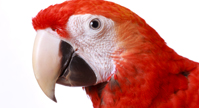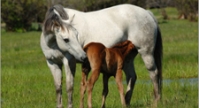Collie Eye Anomaly (CEA)
Description:.jpg)
Collie Eye Anomaly (CEA) is a inherited bilateral eye disease common in a number of breeds of dogs. The disorder causes abnormal development in layers of tissue in the eye under the retina called the choroid. These changes cause what is referred to as Choroidal Hypoplasia. The abnormal choroid appears pale and translucent. In most cases CEA is present at birth and can be detected in puppies as young as 4-8 weeks of age. There is currently no treatment for this disease.
Studies have shown that approximately 70 to 97 percent of rough and smooth collies in the United States and Great Britain have at least one copy of the mutation that causes CEA. Aapproximately 68 percent of Rough Collies in Sweden are affected. Border Collies are also subjected to this disorder, but at a lower percentage. CEA is also seen in Australian Shepherds, Shetland Sheepdogs, Lancashire Heelers, and other herding dogs.
Sample Type:
Animal Genetics accepts buccal swab, blood, and dewclaw samples for testing. Sample collection kits are available and can be ordered at test now.
Test Is Relevant to the Following Breeds:
|
|
|
|
|
|
Collie Genetic Disease Panel ($140.00)
Collie Eye Anomaly (CEA)
Cyclic Neutropenia/Grey Collie Syndrome (CN)
Results:
Animal Genetics offers DNA testing for Collie Eye Anomaly (CEA). The genetic test verifies the presence of the recessive CEA mutated gene and presents results as one of the following:
| CEA/CEA | Affected | The dog carries two copies of the mutant gene and is homozygous for the CEA. The dog will be affected to some degree by Collie Eye Anomaly, and will always pass a copy of the mutated gene to its offspring. |
| CEA/n | Carrier | Both the normal and mutant copies of the gene detected. Dog is a carrier for the CEA mutation, and can pass on a copy of the defective gene to its offspring 50% of the time. |
| n/n | Clear | Dog tested negative for the CEA gene mutation, and will not pass on the defective gene to its offspring. |
Submit a Sample for Testing:
To submit a sample for testing please go to test now.
To order a sample collection kit please go to order sample collection kits.
Cost per sample is $45.00. Please see our Canine Fee Schedule for all test rates.










